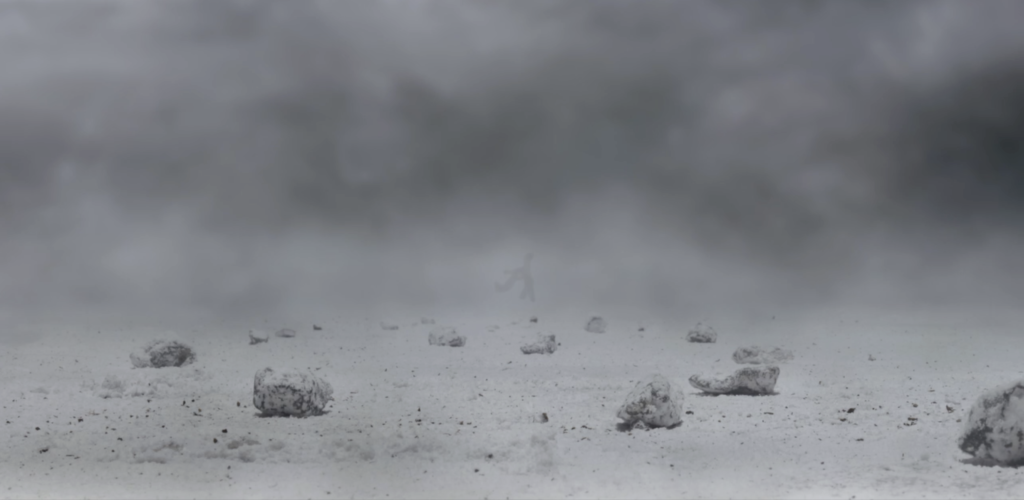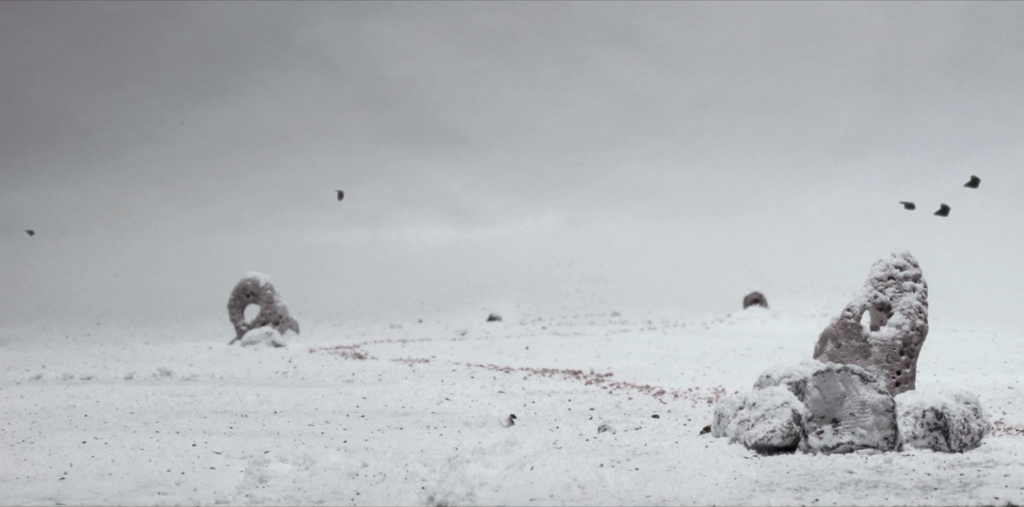Stop motion animation is something amazing! Some of the earliest movies I can remember watching were made by drawing single frames or articulating puppets. Movies such as Wallace And Gromit – A Grand Day Out had something to them only very few computer animated movies could achieve. Later, when I learned about Laika and their work I realised that technology had not only improved computer animation, it had also influenced puppet animation. While the people from Laika were not the first, who used 3D printers to manufacture puppets (especially their facial expressions), they certainly were the first who did it on such a grand scale. Kubo, the main character of a 2016 Laika movie of the same name had 48 million different possible facial expressions . This was achieved by printing thousands of versions of different eyebrows and mouths, that could be clipped to the puppets head with magnets independently from each other. (1)
While the amazingly detailed Laika movies certainly proved their point from a technical perspective, it was Wes Anderson, who’s films proved, at least to me, the narrative potential of puppet animation. This is a personal pick and many might find other movies to be more influential in this regard. To my defence I have not seen Anomalisa just yet (although I have been told it is a masterpiece) and even the aforementioned Wallace and Gromit movies could be seen as proof that puppet animation is great at storytelling.
However: For the longest time puppet animation was either used together with life action (the Star Wars franchise and the early Jurassic Park movies became famous for this), or in its pure form to make movies for children. The idea that this form of storytelling could also be used to tell tales aimed at an older audience was, however, mostly left unexplored (2).
Enter The Fantastic Mr. Fox, a 2009 Wes Anderson movie about a Fox going through a midlife crisis. This is not a children’s movie. It is certainly entertaining, but it is not aimed at a young audience, but those, who know and understand how the main character feels and thinks. To me Wes Anderson’s movies are delightful. I love every last one of them for their playful editing, their intricate set design and the hilarious seriousness of most characters. But there are also some valid points of criticism to be made concerning his work. I have linked a video below that looks at how Wes Anderson depicts cultures other than his own and would suggest watching it if you want to know more (3).
So now we know that puppet animation is not dead, it’s still evolving, and its narrative potential seems to be infinite with it ridding itself from the stigma of being only for children.
It wasn’t, however, until about a year ago when I stumbled upon a stop motion project called Mad God that I began to view puppet animation as a viable way to make a short film myself. Mad God is the passion project of Phil Tippett, a visual effect supervisor, who has worked on the original Star Wars trilogy, Jurassic Park and the Robocop franchise (and Twilight but we will ignore this fact, because it has nothing to do with stop motion). You can find a link to his website, and the first video I saw about him at the end of this article (4)(5). So far 3 Parts have been released. I will probably write a separate Article about Tippett’s work in the future, so look out for that.
While Phil Tippett obviously has a ton of experience and access to professional motion control systems his work still proves how little is needed to realise a stop motion puppet animation movie. The most valuable resource is not gear or the material to make the sets, but time.
So about two months ago I had to stay in quarantine for several weeks. Suddenly I had a ton of time. I realised that I would spend this time in front of some screen, wasting away the hours until I could go outside again, if I couldn’t find something to do. And without really thinking too much about it I began to work on my first stop motion movie. I built a rudimentary puppet out of wires and started experimentation with walking cycles and backgrounds. During those two weeks most of my waking time was spent building or animating. I knew what the basic story would be and just built the sets around that.
I believe there should be a motivation behind the decision to tell a story in any given format. Just animating it, because you can, is obviously fine too, but if the story and the format come together to create something that wouldn’t be possible any other way…that’s just awesome. A recent example for this would be Spider-Man: Into the Spider-Verse or the Series Love, Death & Robots. Both use the style of animation to convey something about the story you witness and wouldn’t be the same if the medium, or even their look was changed (6).
My story is called Illihuluhi and the initial idea is already a couple of years old. I wanted to tell a story about a village, about being a stranger and the way people react to the unknown. In the end, now that the story of my short is pretty much set, a lot has changed, but I believe the feeling has stayed the same. Illihuluhi is all about volklore and the way nature influences our storytelling. It takes place somewhere on the verge between Tundra and Taiga and is set around a small village in the midst of never ending snowfields and a thick fog, that covers everything in milky white light. So first of all this set up would make it pretty much impossible for me to realise the project as a live action movie. But Illihuluhi is also about the uncanny feeling that someone has changed. This can be realised much better by animating a puppet, as movement can be articulated very precisely, and ever so slight changes in the way someone moves go a far way when it comes to creating an uneasy feeling.



Last but not least the fact that Illihuluhi is animated plays very well with the folklore feel of the story and the suspension of belief is less about the realism of the story, or what you see, but more about how it makes you feel. In a way the format of stop motion tells the audience outright “this is not real” and while in many cases this might be a bad thing, it can also help to get people to think about the implication of the story in the real world. Double King by Felix Colgrave is a gorgeous example for this and actually one of the most engaging shorts I have ever seen (7). At no point one thinks about the authenticity of the story, because that’s not what it is about. I believe it is much more about what you feel and what, in the case of Double King, greed might lead to. While over analysing stories can miss their point entirely, I believe there is a reason why so many have tried to explain the philosophy of Double King. Because it’s format projects meaning, not to the world it depicts, but our own.

As I have already stated a major aspect of stop motion animation is time. There are days when you do nothing but cut and colour small pieces of wood, weather miniature clothing or go through a trial and error process of staging your puppets. Making props can be redundant and quite boring. I help my self though this by listening to podcasts or video essays. During my quarantine I discovered SCP (and there will surely be an article about this website and community at some time soon). The YouTube channel The Exploring Series makes audiobooks out of some of the SCP entries and I have gone through pretty much their entire playlist (8) (9). This is a great way to pass some time, as the videos have an average duration of about 20 minutes and there are quite a few good stories to enjoy. SCP is a website about a fictional organisation that secures, contains and protects anomalies. As you can imagine quite a lot of the entries are thus horror stories. The genius of SCP is that there is no canon. Stories that are set in the same universe don’t have to correlate, so world ending events are found quite regularly on SCP.
The time spent doing redundant stuff can obviously also be used to learn. I am absolutely in love with the Team Deakins podcast and follow it since their first episode a few months ago. It’s unbelievable how much free (or in this case quite cheap, as it is on Spotify) knowledge is out there, if you know where to find it (10). Listening to the greats of cinema speaking about their workflow is quite interesting for all who want to tell audiovisual stories themselves. The same is true for the On Writing series by Hello future me. I have rewatched pretty much all of his videos and really love the structured approach he takes to explain world-building, pacing and structure (11).
Now that I have covered what I have listened to, here is what I have actually used to build my sets and puppets: The interior set is mostly made out of balsa wood, which I have found really easy to work with, as it can be cut with a scalpel but has all the nice textures of wood. To colour it I used oil paint just because I lacked anything else at the time. I would dilute the colour in some oil, then colour the wood only to remove most of it again right away to achieve a weathered look and make the woods texture visible. As for now I actually don’t own a ball joint puppet, so I had to build the rig myself. I used wires and super-sculpey to make the skeleton and came up with a system to have interchangeable limbs if one were to break. In the end I chose not to use a latex-cotton mixture as most of the skeleton is covered in clothing anyway. So I just stuff some cotton under the clothing to make it seem as though there is a body underneath. This also allows me to use only one puppet to animate several characters as I just have to change the clothing and can easaly adapt the bodily proportions.

The exterior scenes are mostly set in wide and empty snowfields. I use sugar and plaster powder as snow and just add some small rocks to give it some texture. Clouds and mist are made out of cotton. They are animated separately and then added into the scene during post-production.
So that’s it for now. Some inspiration, my motivation and a few more or less related tips. There will probably be some followup articles about Illihuluhi once the project has evolved a bit.
Sources:
(1) IMDb on Kubos facial expressions and other facts about the movie
(2) IMDb’s list of all stop motion animation movies
(3) Wes Anderson and the Follies of Modern Orientalism – Broey Deschanel
(4) Building Stop-Motion Masterpieces by Hand – Great Big Storie
(6) Forbes interview with Spider-Man’s head of character animation – Luke Y. Thompson
(7) DOUBLE KING – Felix Colgrave

